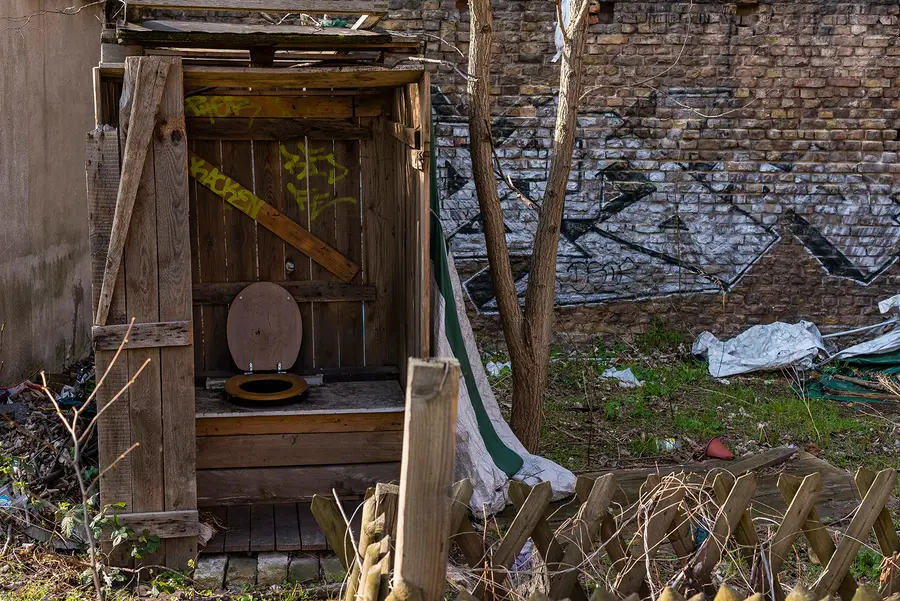Pit Latrine
The theme of this year’s World Toilet Day, “Making the Invisible Visible”, highlights the direct relationship between poorly managed sanitation and groundwater contamination. As illustrated in “Seeing the “Unseen” Value of Water – Reflections on World Water Week 2022”, written by my colleague Connor Kennedy, groundwater is an essential water source for communities globally. Protecting this water source is critical, yet too many people use sanitation facilities that do not appropriately separate human excreta from the environment, creating a pathway for contamination of our groundwater and damaging human health.
But groundwater is not the only unseen and undervalued part of the sanitation challenge. Hiding and keeping things unseen is a common theme in the sanitation sector largely because of human nature’s predisposed disgust for, and desire to hide or ignore, fecal matter. This disgust is so strong that nearly all sanitation systems in high-income communities are built to hide human excrement in underground pipes, where they can be unseen and overlooked. Many are unaware of where their waste is transported to and how it’s treated. This aversion, coupled with the existence of complex sewer systems, has allowed western societies to ignore both the prevalence of inadequate and unsafe sanitation, and its devastating consequences both at home and abroad.
Pipe discharging sewage
Poor sanitation’s widespread impact on our wellbeing
The propensity to conceal all that pertains to sanitation has strong evolutionary roots—humans may have developed an evolutionary disgust to offending stenches as these indicated pathogens that could transmit disease. The occurrence of several “Great Stinks” across European cities in the 1800s caused by poorly designed sewer systems, provided significant political support for the upgrading and development of modern sewers. Some people in low-income countries report a preference for walking far from their homes to defecate rather than store the fecal waste in a nearby latrine, believing that it will make their home impure.
Today, many of the public health implications of poor sanitation are difficult to see and even more difficult to immediately attribute to their true source. Nine months after a major earthquake hit Haiti, for example, the country reported a nationwide cholera epidemic which surprised experts as Haiti had no previously recorded history of cholera. While some initially hypothesized the changing climate conditions as the cause of the outbreak, researchers eventually traced the source to improperly managed sanitation facilities used by United Nations peacekeepers—with devastating consequences. This lack of properly managed sanitation facilities led to an epidemic that infected more than 800,000 people and killed more than 9,000. Cholera remains an issue in Haiti with a new outbreak re-emerging as recently as October 2022.
There are numerous overlooked and invisible pathways through which poor sanitation can transmit diseases to humans. And yet, the entire transmission route remains unseen during our daily lives. While we do not drink or eat items that we can see are contaminated with human waste nor do we intentionally walk in fields or locations with fecal matter, nor do we touch hands we see covered in fecal pathogens, we can’t see the feces carried by flies nor do we intentionally share utensils, toys, or other contaminated materials, which often are all viable pathways for fecal-oral transmission. Safely managed sanitation and handwashing can prevent future victims from diseases by blocking the transmission through these unseen pathways.
The negative psycho-social effects of poor sanitation
In addition to the public health issues, numerous other psycho-social factors, which are often felt internally rather than expressed visibly, are important influences on sanitation access. An individual’s sense of safety, privacy, or shame and pride in using sanitation facilities, impact sanitation behaviors and decision-making. Fear of violence, danger in the form of animal attacks in the immediate environment or sexual assault and harassment (particularly for women), are also important psycho-social stressors impacting the millions of people who have inadequate access to safe and secure sanitation facilities. These emotional, cultural, and social factors influencing sanitation decisions remain largely undiscussed and unacknowledged, and yet their impact is enormous.
An inclusive approach to addressing the sanitation crisis
To address the global sanitation crisis, how can the sector move away from being hidden and what solutions can be put in place to increase equitable access to safe, sustainable, and effectively managed sanitation services?
One step for addressing this challenge is through traditional marketing, along with behavior change communication campaigns. These approaches are needed to increase the visibility of affordable and safe sanitation options, along with shedding light on the often unallowed issues stemming from poor sanitation. For example, RTI is implementing market-based sanitation projects in Kenya and Zambia--the central idea being that markets will do the best job of delivering desirable sanitation products to the right people in the right places. However, for the markets to function, several unseen components must also function appropriately.
Governance must also play a pivotal role in addressing the sanitation crisis. WASH governance is often overlooked in interventions focused on increasing access to sanitation services, however oversight and regulatory bodies must be resilient if we are to ensure that technological solutions are built, operated, and well maintained to avoid fecal waste contamination. In addition, engaging entrepreneurs and private sector players and customers to recognize the multiple economic, health, and aspirational benefits from better sanitation management remains critical.
Working together to make the unseen sanitation sector visible
Sanitation issues are not contained by country borders, as evidenced by the introduction of cholera into Haiti. Furthermore, despite efforts to improve sanitation globally in line with the United Nations’ Sustainable Development Goal 6, here in the U.S, we have not been able to “ensure availability and sustainable management of water and sanitation for all.” Nearly one million Americans, mainly people experiencing homelessness and members of marginalized groups, don’t have access to safely managed sanitation services.
Lack of safe safely managed services has implications that reach beyond public health, impacting psycho-social and well-being, public safety, environmental justice, food hygiene, water security, climate change, gender equality, human rights, governance, public safety, international relations, access to education, and numerous other essential areas.
Discussions on World Toilet Day give us an opportunity to make the invisible visible. With renewed focus, my colleagues and I at RTI are committed to working with countries and partners find solutions that move us closer to achieving the United Nations’ Sustainable Development goal of “universal access to drinking water, sanitation and hygiene by 2030”.
Learn more about our work to increase access to improved water supply, sanitation, and hygiene (WASH) services.
Sign up to receive our news.


